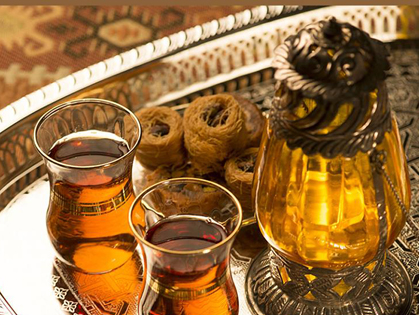PAKISTANI CUISINES
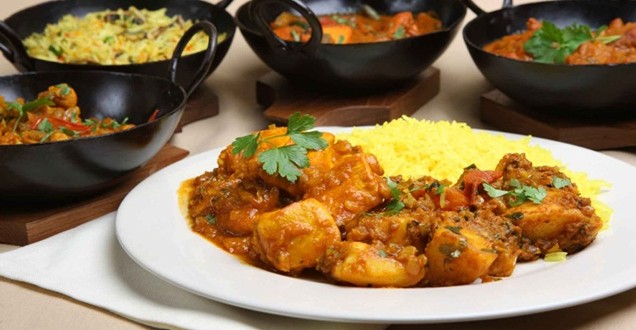

Pakistani cuisine is a refined blend of various regional cooking traditions of South Asia. Pakistani cuisine is very similar to North Indian cuisine, but incorporates noticeable Central Asian and Middle Eastern influences and is more meat-oriented. The fusion Mughlai cuisine is the most popular cuisine found in most Pakistani restaurants. Within Pakistan, cuisine varies greatly from region to region, reflecting the country's ethnic and cultural diversity. Food from the eastern provinces of Punjab and Sindh can be highly seasoned and spicy, which is characteristic of the flavors of the South Asian region. Food in other parts of Pakistan, particularly Balochistan, Azad Kashmir, Gilgit-Baltistan, Khyber Pakhtunkhwa, and the Federally Administered Tribal Areas also hold distinct tastes based on various regional influences. International cuisine and fast food are popular in the cities. Blending local and foreign recipes (fusion food), such as Pakistani Chinese cuisine, is common in large urban centres. Furthermore, as a result of lifestyle changes, ready made masala mixes (mixed and ready to use spices) are becoming increasingly popular. However, given the diversity of the people of Pakistan, cuisines generally differ from home to home and may be different from the mainstream Pakistani cuisine.
Puri - This is a breakfast bread made of white flour and fried. Typically eaten with sweet semolina halwaor gravy (made out of chickpeas and potatoes). Puri is a fairly urban concept in Pakistan and puris are not part of rural cuisine anywhere in Pakistan. However, Halwa Puri has now become a favored weekend or holiday breakfast in urban Pakistan, where it is sometimes sold in shift carts or in specialty breakfast shops.
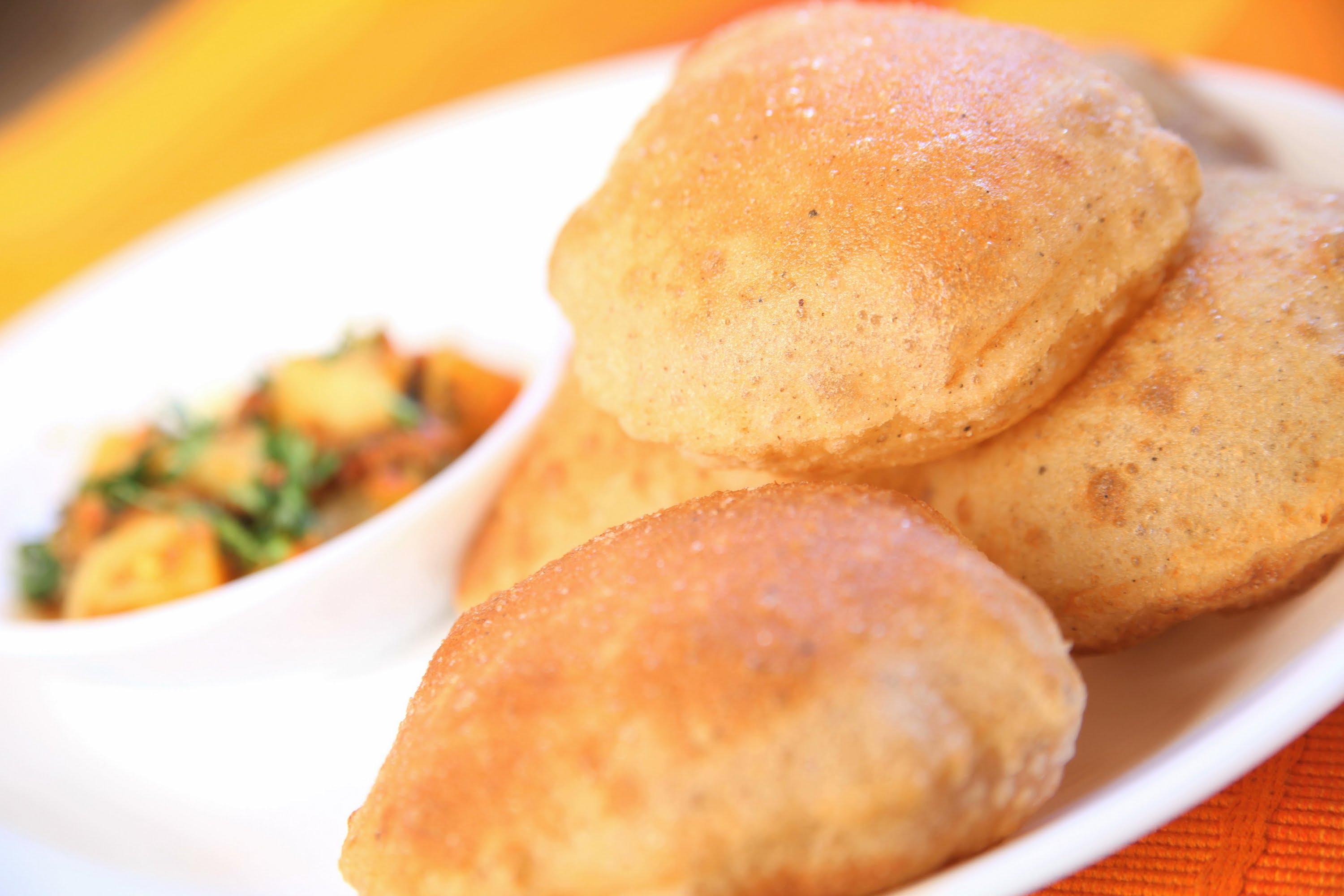
Naan the word Naan means bread. Unlike chapatis, naans are slightly thicker, typically leavened with yeast and mainly made with white flour. Some varieties like Roghani and Peshwari naan may also be sprinkled with sesame seeds. Naans are seldom, if ever, made at home since they require tandoor based cooking and require prep work. Numerous varieties of plain, as well as stuffed naans are available throughout Pakistan and each region or city can have their own specialty. Naan is a versatile bread and is eaten with almost anything. For instance, 'saada naan' or 'plain naan', is often served with Siri-Payay (cow's head and trotters) or Nihari (slow cooked beef stew) for breakfast in many parts of the country.
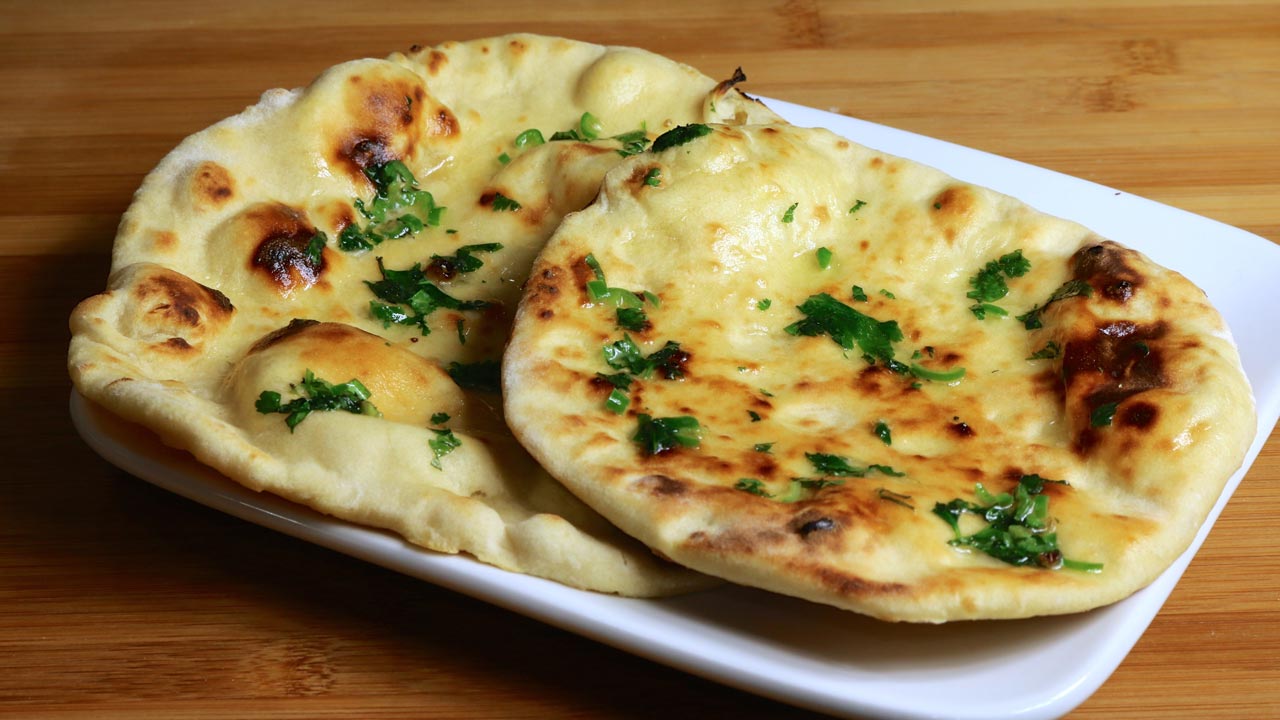
Nihari is stew consisting of slow-cooked beef along with bone marrow, garnished to taste and occasionally served with cooked brain.
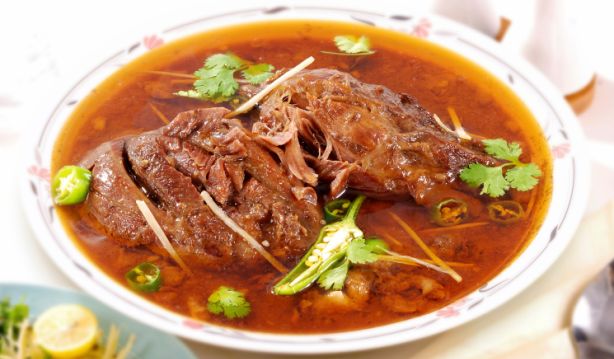
Haleem is a stew popular in the Middle East, Central Asia, Pakistan, and India. Although the dish varies from region to region, it always includes wheat, barley, lentils and meat.
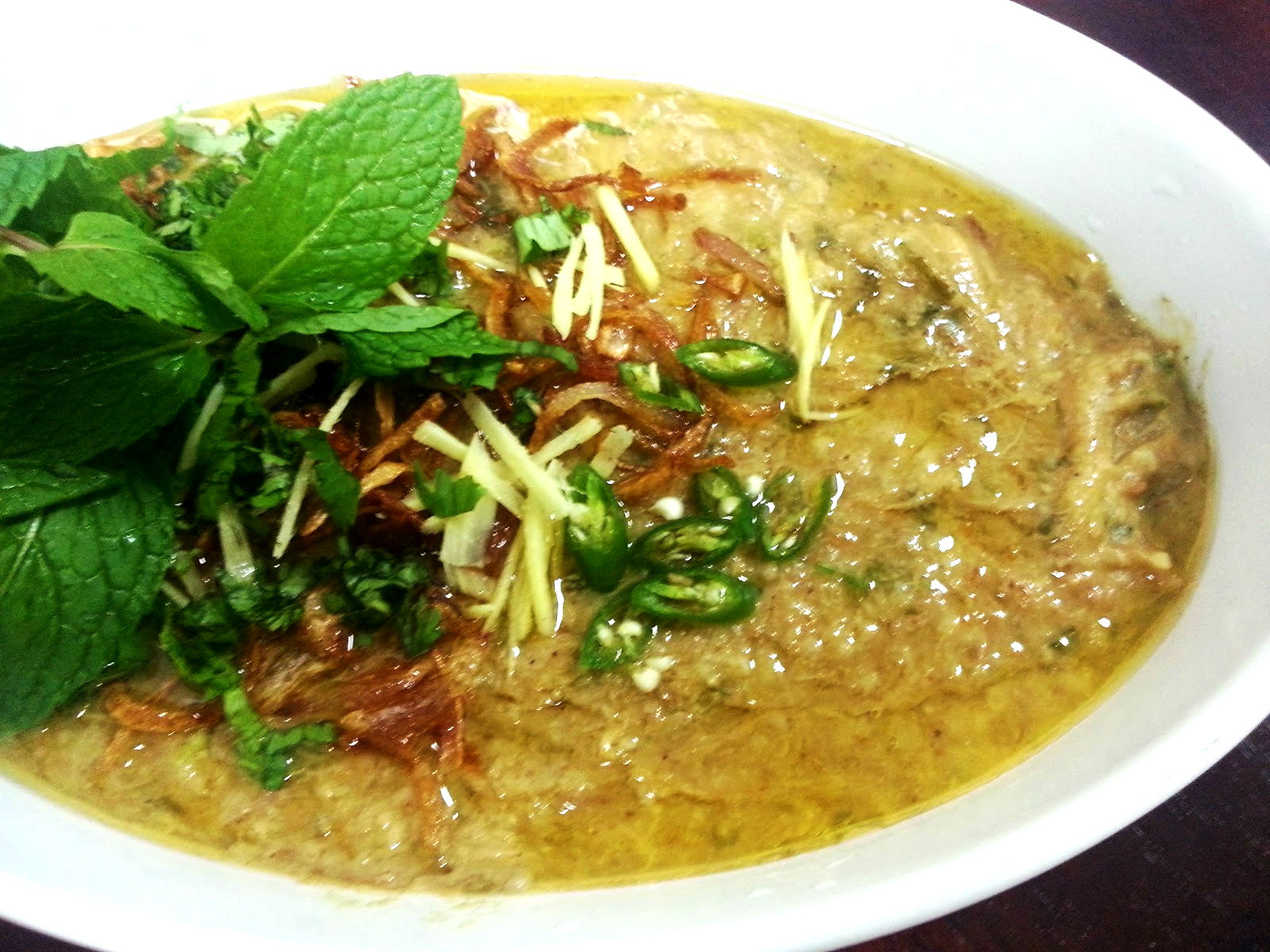
Panipuri is a common street snack in several regions of the Pakistani-Indian Subcontinent. In North India, it is known as Golgappe. It consists of a round, hollow puri, fried crisp and filled with a mixture of flavored water (pani), tamarind chutney, chili, chaat masala, potato, onion and chickpeas.
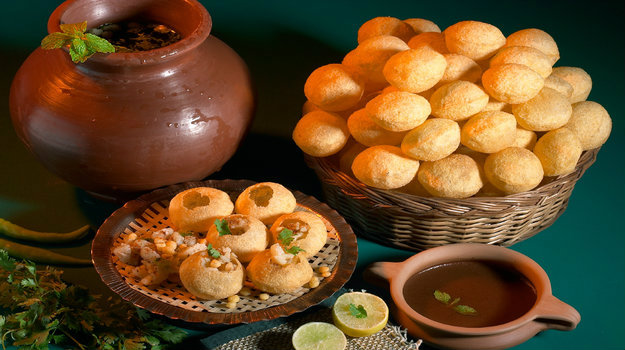
samosa is a fried or baked dish with a savoury filling, such as spicedpotatoes, onions, peas, lentils, macaroni, noodles, and/or minced meat (lamb, beef or chicken). Pine nuts can also be added.
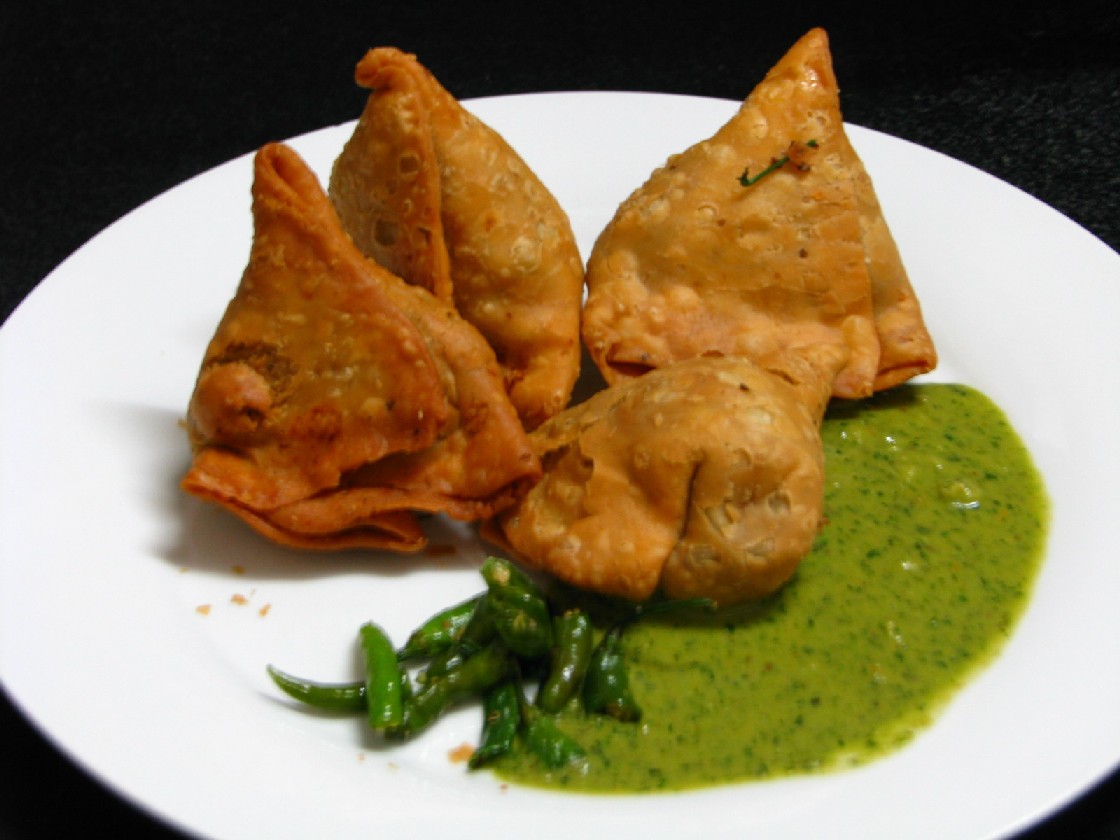
Pakoray are created by taking one or two ingredients, such as onion, eggplant, potato, spinach, plantain, paneer, cauliflower, tomato, or chili pepper. They are also occasionally prepared with bread, buckwheat, groundnut, fish, or chicken. They are dipped in a batter made from gram flour and then deep-fried. Pakoray are usually served as a snack or appetizer.
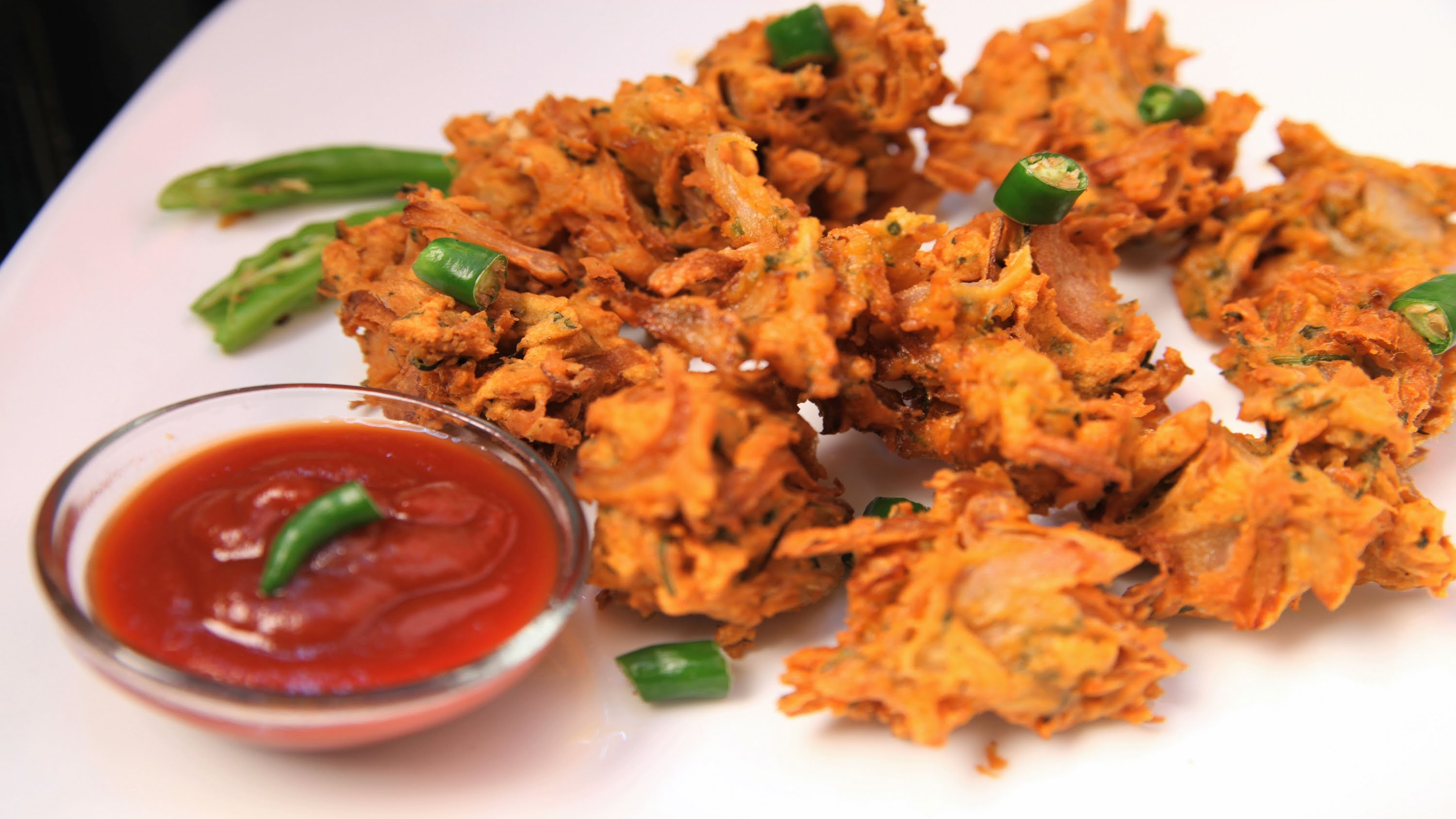
Seekh kabab prepared with minced meat with spices and grilled on skewers. It is cooked in a Tandoor, and is often served with chutneys or mint sauce. It is often included in tandoori sampler platters, which contain a variety of tandoor cooked dishes. A seekh kebab can also be served in a naan bread much like döner kebab. Seekh kebabs are part of the traditional Pakistani die.
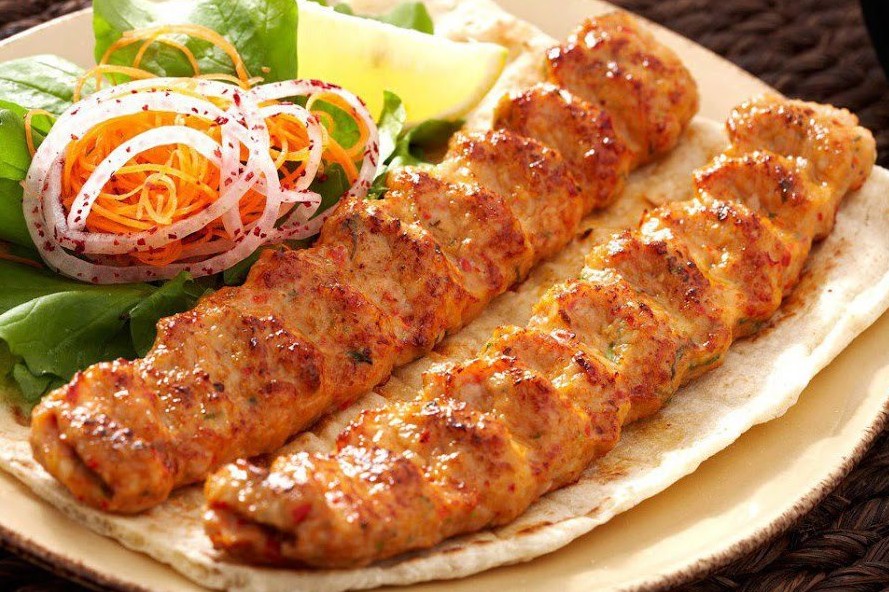
Biryani is a mixed rice dish from the Indian subcontinent. It is made with spices, rice and meat or vegetables.
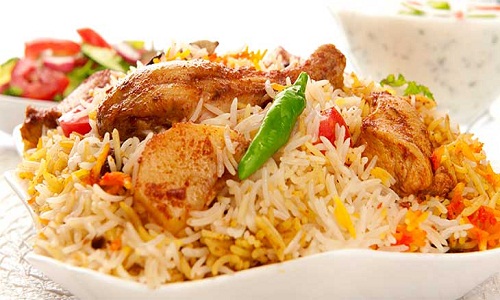
Chicken tikka is a chicken dish originating in South Asia where it remains popular in India and Pakistan. It is traditionally small pieces of boneless chicken baked using skewers in a clay oven called a tandoor after marinating in spices and yogurt, essentially a boneless version of tandoori chicken.

oti (bread) is extremely popular all over Pakistan. Tandoori rotis are baked in a clay oven, known as a tandoor, and are consumed with just about anything.
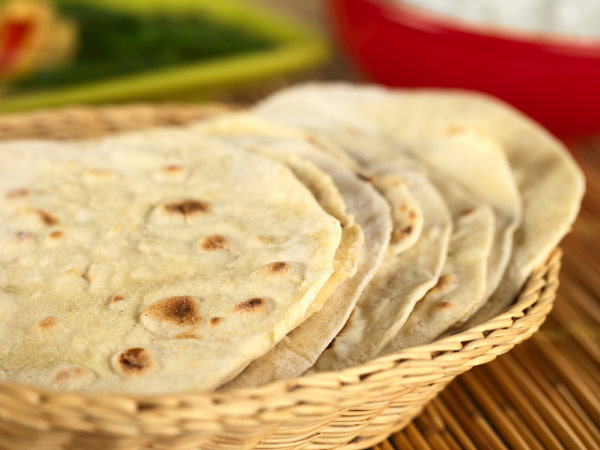
Korma or is a dish originating in South Asia consisting of meat or vegetables braised in a spiced sauce made with yogurt, cream, nut or seed paste.
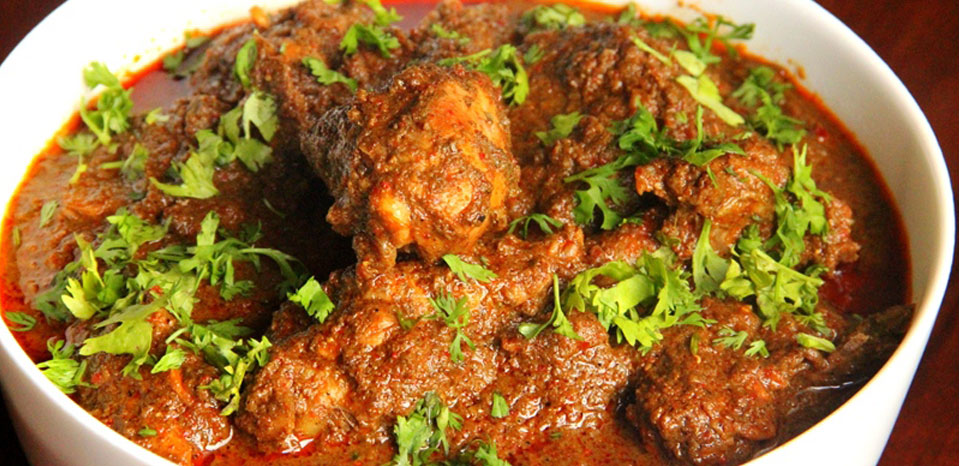
Sarson da saag is a popular vegetable dish in the Punjab regions of India and Pakistan made from mustard leaves (sarson) and spices. The dish is regarded as the traditional way to make saag and is usually served with makki di roti (literally "unleavened corn bread". It can be topped with either butter (unprocessed white or processed yellow butter) or more traditionally with ghee (clarified butter). Some spinach (called palak in Punjabi) may be added to enhance color and thicken the dish, even if this might alter the taste.
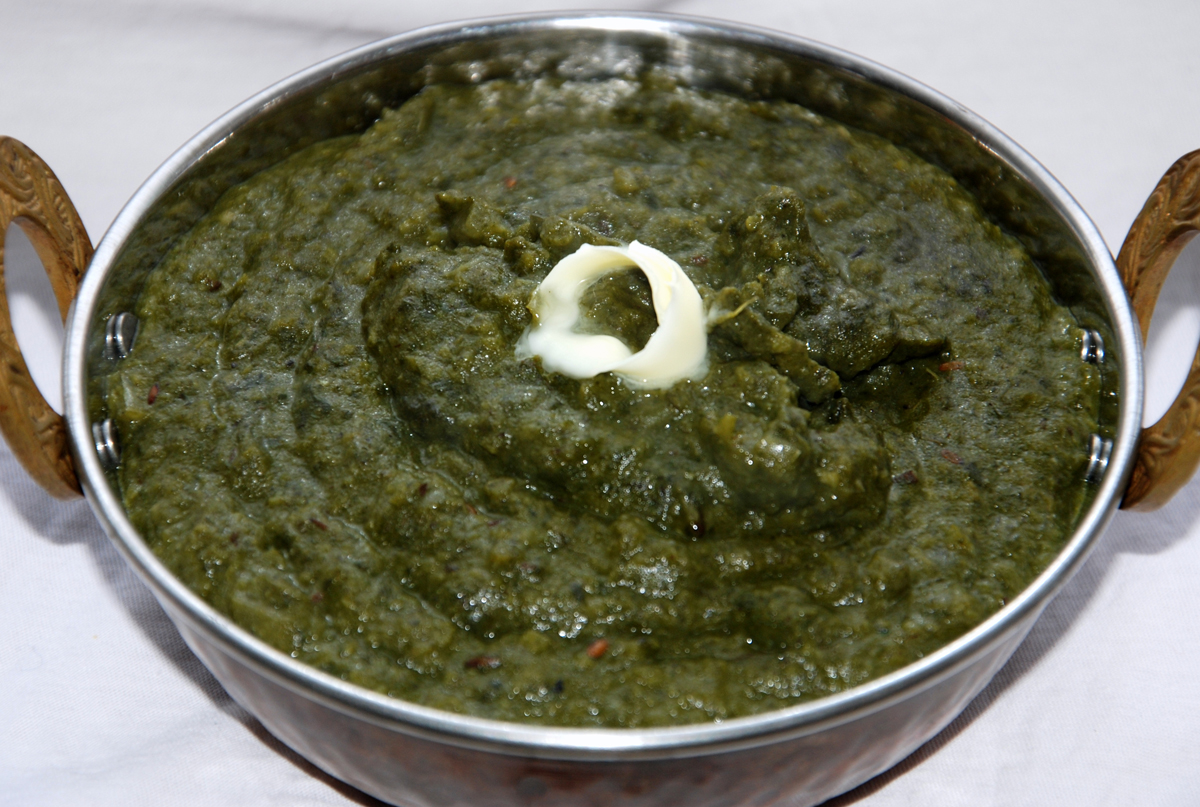
>Kheer is a rice pudding from the cuisine of the Indian Subcontinent, made by boiling rice, broken wheat, tapioca, or vermicelli with milk and sugar; it is flavoured with cardamom, raisins, saffron, cashews, pistachios or almonds. It is typically served during a meal or as a dessert.

Gajar ka halwa is a sweet dessert pudding associated mainly with the North India and Pakistan. It is made by placing grated carrot in a pot containing a specific amount of water, milk and sugar and then cooking while stirring regularly. It is often served with a garnish of almonds and pistachios. The nuts and other items used are first sautéed in ghee, a South Asian clarified butter.
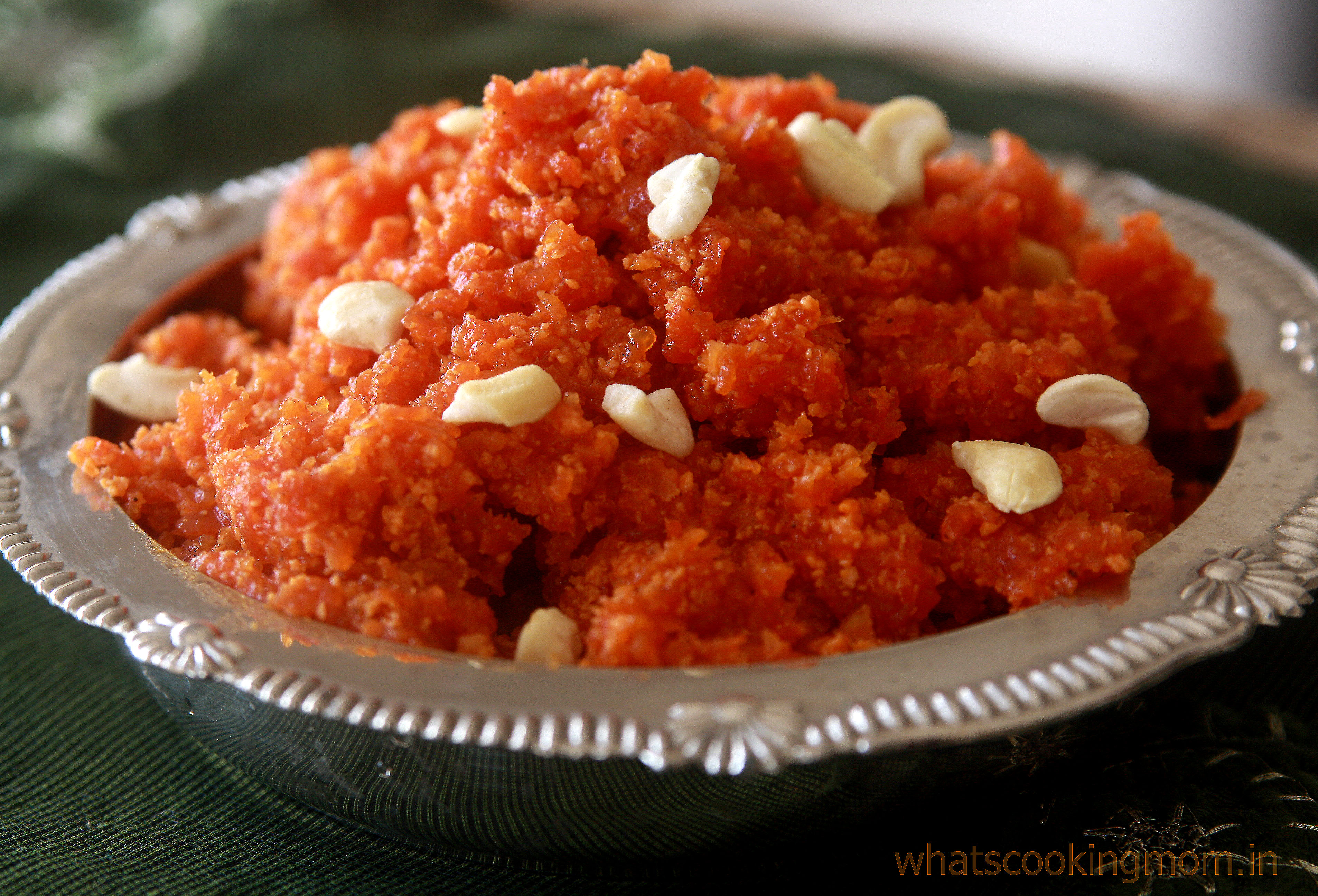
>Kheer is a rice pudding from the cuisine of the Indian Subcontinent, made by boiling rice, broken wheat, tapioca, or vermicelli with milk and sugar; it is flavoured with cardamom, raisins, saffron, cashews, pistachios or almonds. It is typically served during a meal or as a dessert.

Barfi, barfee, or burfi is a dense milk based sweet confectionery from South Asia, a type of mithai. Originally from India, the name is a derivative of the Persian word barf, which means snow. A few of the famous varieties of barfi include besan barfi (made with gram flour), kaaju barfi (made with cashews), pista barfi (made with ground pistachios), and sing barfi (made with peanuts). The main ingredients of plain barfis include condensed milk and sugar. The ingredients are cooked in a vessel until the mixture solidifies. The flavor of a barfi is often enhanced with fruits (such as mango or coconut) or nuts (such as cashew, pistachio, or peanut) and spices (such as cardamom or rose water). Barfis are usually coated with a thin layer of edible metallic leaf known as vark.
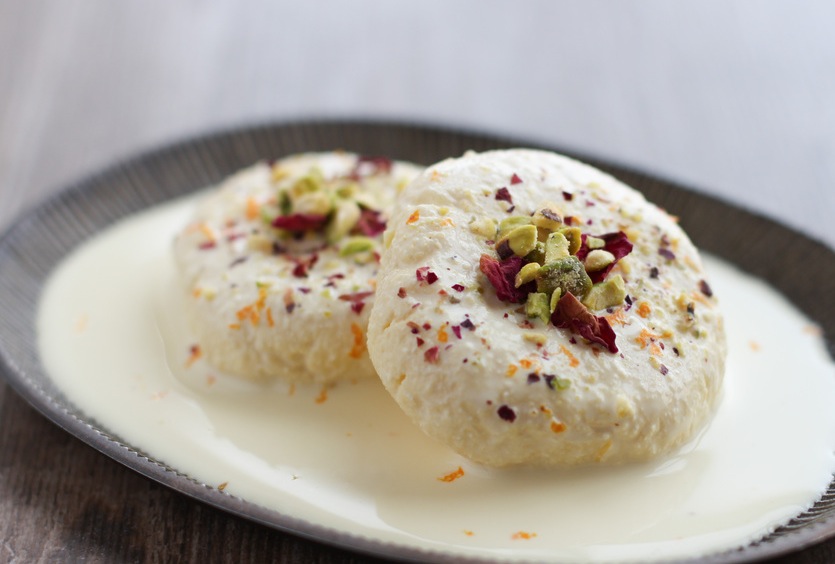
Ras malai consists of sugary white cream, or yellow-coloured (flattened) balls of chhana soaked in malai (clotted cream) flavoured with cardamom. It is cooked in sugar syrup and milk with saffron, pistachios and kheer as stuffing.

Kulfi has similarities to ice cream in appearance and taste; however it is denser and creamier. It comes in various flavours. The more traditional ones are ccrea (malai), rose, mango,cardamom (elaichi), saffron (kesar or zafran), andpistachio.

Jalebi is made by deep-frying a wheat flour (maida flour) batter in pretzel or circular shapes, which are then soaked in sugar syrup. Jalebi are served warm and cold.
Falooda is a cold beverage popular in the Indian subcontinent. Traditionally it is made from mixing rose syrup,vermicelli, psyllium (ispaghol) or basil(sabza/takmaria) seeds, tapioca pearls and pieces ofgelatin with milk or water. Vermicelli used for preparing faloodeh is made from arrowroot whereas vermicelli used in the Indian version is usually made from wheat.

Lassi is a popular traditional yogurt-based drink from the Indian Subcontinent and originates from the Punjab. Lassi is a blend of yogurt, water, spices and sometimes, fruit. Traditional lassi (a.k.a., "salted lassi", or simply, "lassi") is a savoury drink.
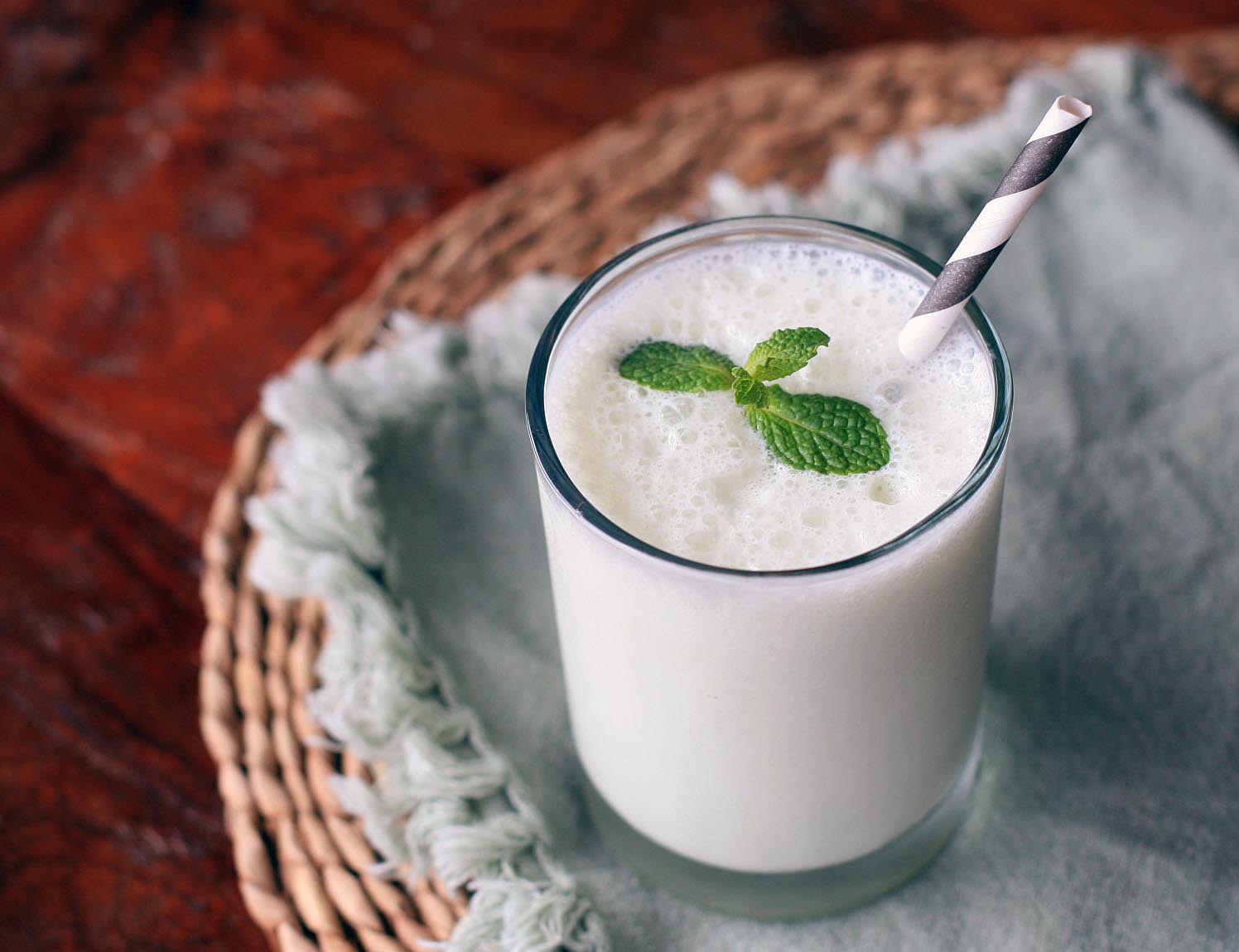
Sharbat is a popular West and South Asian drink that is prepared from fruits or flower petals. It is sweet and served chilled. It can be served in concentrate form and eaten with a spoon or diluted with water to create the drink. Popular sharbats are made of one or more of the following: rose water, sandalwood, bael, gurhal (hibiscus), lemon, orange, mango, pineapple, and falsa (grewia asiatica).
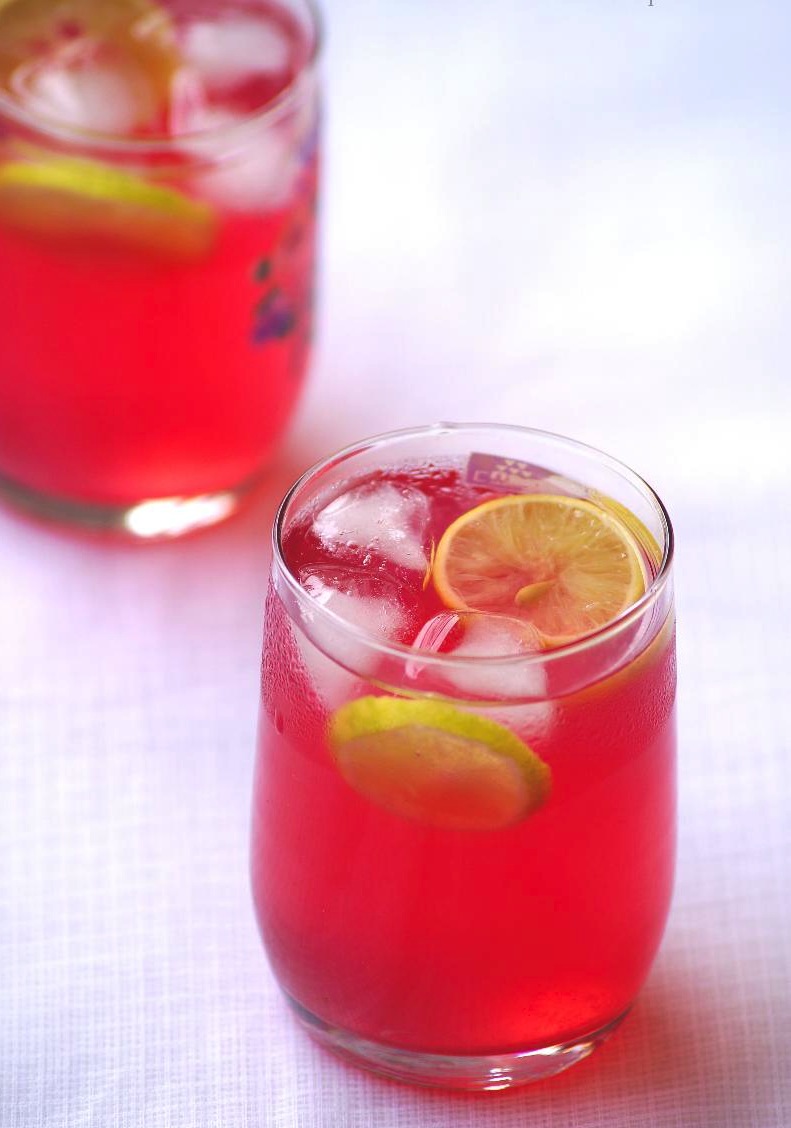
Doodh patti chai is a tea beverage consumed in India, Pakistan and Bangladesh; in which milk, together with sugar, is boiled with tea. This milk-based tea is quite common in South Asia.
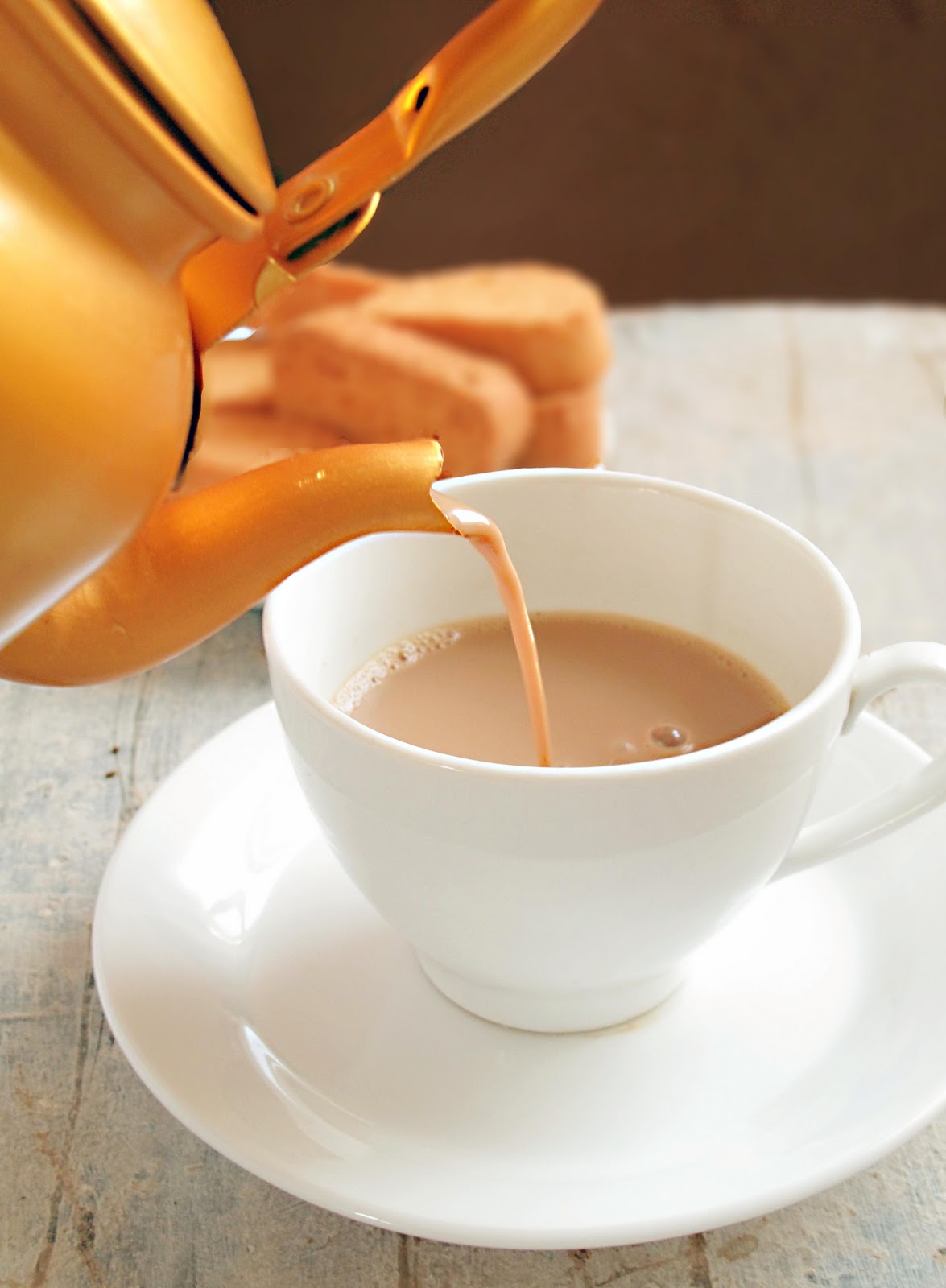
Kahwah is a traditional green tea preparation consumed in Afghanistan, northern Pakistan, some regions of Central Asia as well as the Kashmir Valley. In Pakistan, it is made in the Khyber Pakhtunkhwa, Gilgit-Baltistan and north Punjab regions. It is a popular breakfast beverage among Kashmiris, generally accompanied with special Kashmiri baked items like girda.
